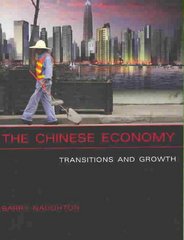Question
PharmaCare is the public drug insurance program administrated by the Province of British Columbia and is available to all BC residents. For some drugs the
PharmaCare is the public drug insurance program administrated by the Province of British Columbia and is available to all BC residents. For some drugs the Product Listing Agreement (PLA) includes rebates that the manufacturer will pay the province based on agreed formulas. The Pharma Analytical team is responsible for producing invoices for these PLAs.
Drug X was introduced on 2020-04-01 to treat Arithmophobia. The MoH signed a Product Listing Agreement (PLA) with the manufacturer which provides the ministry with rebates based on two rebate formulas. Invoices are issued separately for each rebate type for each fiscal year (ending March 31st).
Unit Rebate
A rebate per unit dispensed. The following formula is applied:
R = AC * (1 - NP/ LP)
Where
R = the dollar amount of the rebate
AC = Accepted Costs (these are the costs accepted by PharmaNet as valid, meaning the client is on PharmaCare and they meet any additional criteria for the dispense of the drug).
NP = Net Price, expressed per unit
LP = List price, the prevailing per-unit ex-factory List price, expressed per unit.
Annual per patient cap rebate:
The manufacturer agreed to cap the annual net drug cost (not including applicable mark-up and/or dispensing fees) of each individual patient to $2,000 (the per patient cap) for each annual treatment period. The annual treatment period for each patient is defined as the twelve (12) month period beginning on the date of the first accepted claim for that patient. To be included in the invoice, clients must have their annual treatment period end within the timeframe of the invoice.
The following formula is applied:
Rp = NP/LP * ACp - 2000 * (MP/LP)
Where Rp = the total dollar amount of the annual rebate per patient
NP = Net Price
LP = List price, the prevailing per-unit ex-factory price, expressed per unit.
ACp = The total dollar amount of accepted claims per patient in their annual treatment period
MP = maximum reimbursement price for product. The max price is based on the list price times a markup of 8%
Drug X = List price is $540 and Net Price = $360
In the case of the PLA of drug "XpensIV", patients purchase the drug at the retail price, at a cost of RP dollars per unit, which PharmaCare pays in full. A lower "net price", however, has been negotiated by PharmaCare with the drug manufacturer resulting in a cost of NP dollars per unit. The net price is implemented by the drug manufacturer paying an annual unit rebate to PharmaCare for the quantity (Q in units) of XpensIV utilized by PharmaCare covered patients during the year.
Question 1) What is the rebate formula?
Question 2) Draw a graph of price (y-axis) versus quantity (x-axis) showing the retail price, net price, and quantity. Indicate which regions represent the rebate paid by the manufacturer and the net amount PharmaCare paid after the rebate.
Due to initial uncertainties regarding the number of patients requiring XpensIV, and PharmaCare wanting to manage risk, it was able to further negotiate even better pricing in the form of two quantity caps. For units beyond the smaller first cap (Q1) the net price is reduced by a 60% (i.e. NP2 = 0.6*NP1). PharmaCare is fully reimbursed for units beyond the second cap (Q2).
Question 3) Redraw the graph from 2) showing the new net pricing structure. Assume that the quantity is larger than the second cap. Again, indicate which regions represent the rebate paid by the manufacturer and the net amount PharmaCare paid after the rebate (i.e., the PharmaCare net cost).
The data is in this google drive link = https://drive.google.com/drive/u/4/folders/1rVO_CS2CrXOE5qThMnuudQ0evmmocsrY
Please help Thanks a lot
Step by Step Solution
There are 3 Steps involved in it
Step: 1

Get Instant Access to Expert-Tailored Solutions
See step-by-step solutions with expert insights and AI powered tools for academic success
Step: 2

Step: 3

Ace Your Homework with AI
Get the answers you need in no time with our AI-driven, step-by-step assistance
Get Started


